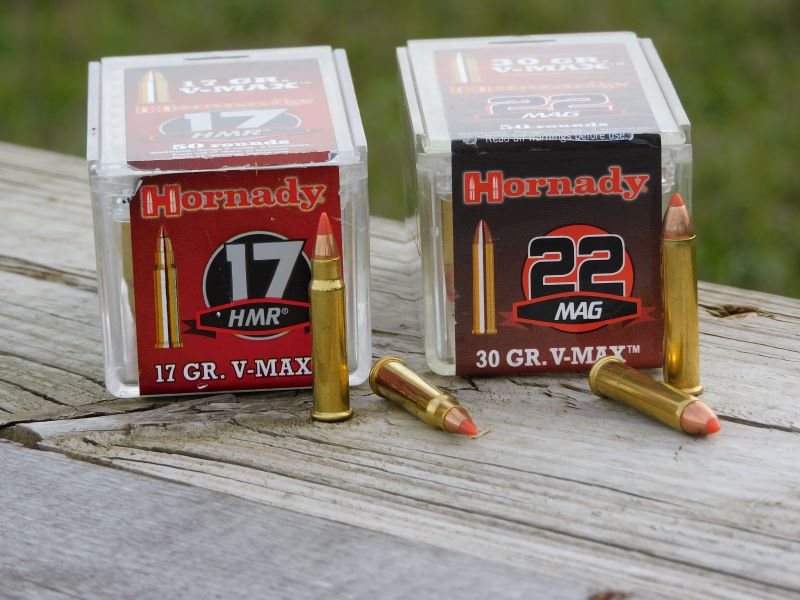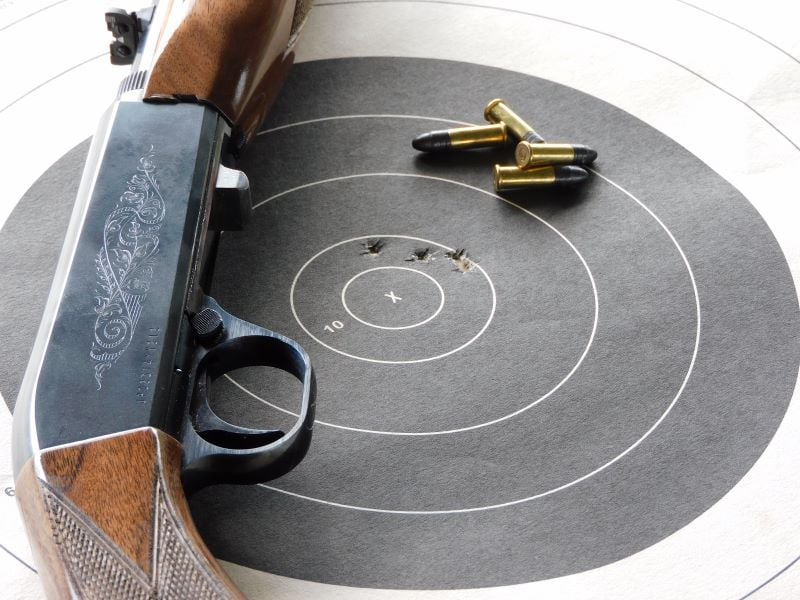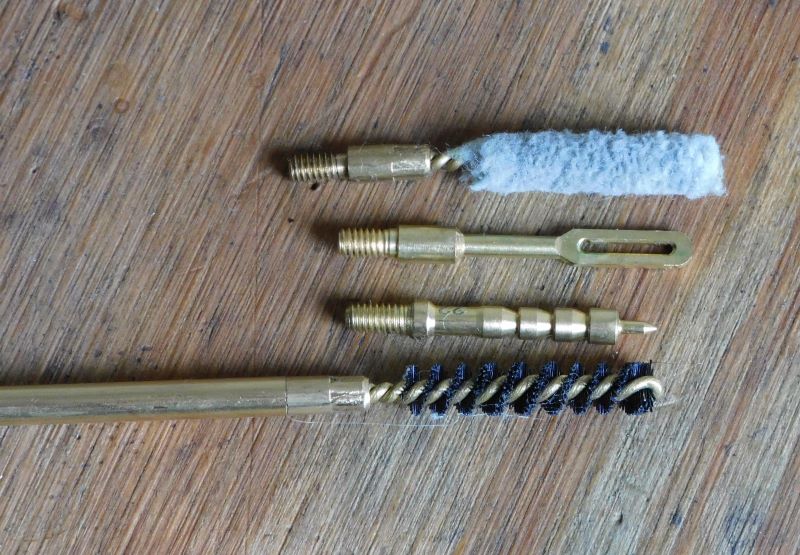The story of rimfire cartridges is one of constant improvement. The original .22 Short, which was introduced back in 1857, was eclipsed first by the .22 Long, then the .22 Long Rifle, and then by the .22 Magnum. And then manufacturers went for lighter bullets in even smaller calibers to squeeze as much performance out of small rimfire cases as possible. The most successful of these rounds is the .17 HMR. Read on to learn more about the .17 and why you might want one.

The History of the .17 HMR
The introduction of the .22 Winchester Magnum Rimfire round in 1959 represented a leap in lethality for small game and varmint hunters. Like the .22 LR did over the .22 Short, the .22 Magnum had a much longer case for more powder. It was also nominally .22 caliber, but it used a jacketed inside lubricated bullet instead of a heeled lead bullet that was more prone to damage when carried in pockets or while loading.
A 40-grain bullet from a .22 Magnum rifle could hum out at over 1,800 feet per second, much faster than high-velocity .22 LR loads that left the muzzle at less than 1,300 feet per second. In brief, the .22 Magnum was more reliable and much more powerful than the .22 LR, and the velocity premium gave it a better chance against wind drift and bullet drop. But an even smaller bullet could be pushed even faster.
In 1969, Remington introduced the 5mm Remington Magnum Rimfire. It used an odd .20 caliber bullet that weighed 30 grains and traveled at over 2,300 feet per second. It was the most powerful rimfire round out there, but it appeared the world had become too accustomed to larger .22 caliber rounds as it did not gain popularity. In 1982, Remington quietly gave up on the round.
Trying Again
In the early 2000s, Hornady began experimenting with the .22 Magnum cartridge case. The case has a generous powder capacity and, by that point, was a popular chambering in many rifles. It was the ideal candidate for a wildcat cartridge as only the barrel would have to be changed, and the action of existing rifle lines could be used without modification. In 2002, Hornady introduced this new round as the .17 HMR or .17 Hornady Magnum Rimfire.
Hornady bottlenecked the .22 Magnum parent case for a small 17-20 grain .172 inch diameter bullet. The new round produced less chamber pressure than the old 5mm, but it tossed its bullet at over 2,600 feet per second. Over 20 years later, the .17 HMR has only gained in popularity, and every major manufacturer has a loading or a rifle for it.

The .17 HMR: What Do You Use It For?
In a previous article on the practical accuracy of the .22 LR, I noted that high-velocity ammunition fired from a rifle tended to have less drop and wind drift at distance. In the case of the .22 LR, the higher the velocity, the less drop I encountered. But even with the hottest ammo, the .22 LR drops roughly three inches at 100 yards with a 50-yard zero. That can make the difference between a hit and a miss when the distances grow greater, particularly when shooting at small targets. The .22 Magnum improves on that performance with a higher velocity .22 round, and the .17 HMR improves upon the Magnum with a lighter, faster bullet.
Most 40-grain .22 Magnum loads on the market have an advertised velocity of 1,875 feet per second. 20-grain bullets are at the heavier end of the .17 HMR spectrum but are advertised at 2,375 feet per second. More typical 17-grain rounds like the Hornady V-Max load clock in at 2,550 feet per second. That translates to much less time between the muzzle and the target and less guesswork when shooting small game at longer distances.

Popular Among Hunters
The .17 HMR has gained a reputation of being particularly useful on small varmint animals like chipmunks and gophers—animals that are skittish by nature, hard to hit, and too wary of people to stalk for a closer shot with a .22. No doubt, this use was Hornady’s intention as most .17 HMR loads use light hollow-point or ballistic tip rounds that break apart on impact. It delivers a lot of energy but not much to eat. That is because you don’t necessarily want to eat varmint animals.
But meat hunters have found some value in the .17 for all the same reasons varmint hunters flock to it. With proper shot placement and bullet choice, the .17 can bring in meat for the pot as well. The private range I frequent is quite wild, and my resident-owner’s go-to rifle is a Savage 93R17 in .17 HMR. He keeps his shots inside 200 yards, and his loads of choice range is a non-expanding 20-grain full metal jacket load. He has killed everything from swamp rabbits to coyotes and swears by the rifle and the round.
Pros of the .17 HMR
Although I have never hunted with the .17 HMR, I have sent quite a few of those little pills downrange on the firing line. For me, the .17 has much less drop than either the .22 LR or the .22 Magnum, even at a moderate distance of 100 yards. I also noticed that the .17 ammunition shoots more accurately at that distance. Depending on the load, the difference can be marginal, but it is there. With the right load, it will take game without causing much meat damage, but it takes that game at distances where you might be skunked with a .22.

Cons of the .17 HMR
The .17 HMR is a cartridge with excellent potential, but it has some economic and ballistic issues that don’t affect other rounds. For small game hunting at closer distances (within 75 yards), the job can be accomplished easily with a rifle chambered in .22 LR. The rifles are more available and are, on the whole, less expensive. For example, the Savage M93R17 has an MSRP of $309. The similar Mk II in .22 LR is priced at $269. Ammunition prices break even more heavily in favor of the .22 LR. .17 HMR ammunition is even more expensive than the more comparable .22 Magnum.

Shooting the .17 HMR also poses its unique challenges. In my shooting, I noticed the .17 HMR to be as sensitive to humidity as aging knees. On shooting a .17 HMR Henry Varmint Express rifle alongside a rifle chambered in .22 LR, I found my groups with the .17 widened consistently on humid days, but my groups improved during periods of low humidity–such as after a cold front. Even in the fairest weather, my accuracy decayed when shooting rounds through a dirty bore. It was once conventional wisdom to say that .22 rifle bores did not need to be cleaned, though chambers should be. That is advice you certainly don’t want to take with the tiny .17. To that end, .17 HMR cleaning accessories like rods, brushes, and jags can be hard to source locally while .22 accessories are boringly common.
The Bottom Line
We have seen rimfire rounds come and go. Only a few have stood the test of time, and thus far, the .17 HMR has held up very well. It is not as cheap or as suppressor-friendly as the .22 LR, nor does it pack the sheer foot-pounds of energy of the .22 Magnum. But the flatter trajectory of the .17, on its own, is probably going to be worth the cost of admission when those other rounds might prove lacking. In its niche, accept no substitutes.

